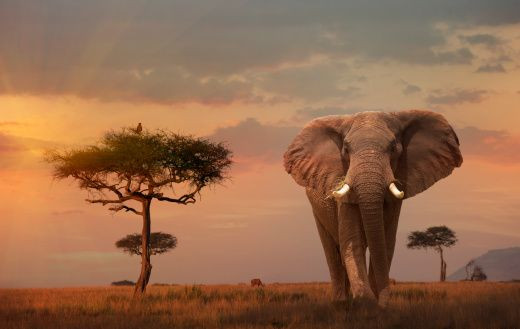Argentinian Hunter Trampled And Killed By Elephant In Namibia

An Argentinian man in Namibia was trampled and killed by an elephant Saturday, according to the Namibia Press Agency Monday. Jose Monzalvez, 46, was hunting in a group Saturday afternoon when he was trampled by an elephant in a private wildlife area 70 kilometers — or approximately 43 miles — from the town of Kalkfeld.
He and four others were following a group of elephants on the farm. One of the elephants charged at the group before they could assemble to shoot it. Monzalvez, who worked for an oil company, was with three Namibians and another Argentine when he was killed, according to Otjozondjupa regional police spokesperson warrant officer Maureen Mbeha. Monzalvez had a hunting permit with him at the time of his death. All five members of the group were professional trophy hunters.
Monzalvez's family was later informed of his death.
In May, a South African hunter was trampled and killed by an elephant another member of his hunting group shot. According to Netwerk24, someone in the group shot the elephant. As it fell, it crushed Theunis Botha. The 51-year-old Johannesburg man was a well-known trophy hunter. His death sparked support from his friends and fellow hunters but also led to backlash from critics of big game hunting.
According to ‘Elephant Rage,’ a 2005 National Geographic documentary, about 500 people are killed by elephants a year. Attacks increase each year.
“I do think that elephants are becoming more aggressive towards humans in very compressed areas where they are being shot at and harassed,” Caitlin O’Connell-Rodwell, a biologist at Stanford University, said to National Geographic in a June 2005 phone interview. “It is a difficult dilemma in areas where elephant habitat is shrinking and the human population is increasing such that poor farmers have little choice but to expand their farms to make ends meet.”
The World Wildlife Fund (WWF) reported 1.3 million African elephants in 1970 but said that number shrank to 600,000 by 1989. Some areas of Africa took measures to preserve the elephant population, while other areas reduce elephant numbers with controlled hunts and other methods.
WWF listed Asian elephants as endangered and as requiring extreme preservation measures to control their population. WWF listed African elephants as being overall vulnerable, which is one step above being endangered. However, some African elephant populations are still endangered because of the now-illegal ivory trade, for which hunters would cut the tusks off elephants. National Geographic reported on its website the current population trend of African elephants as increasing.
© Copyright IBTimes 2024. All rights reserved.




















